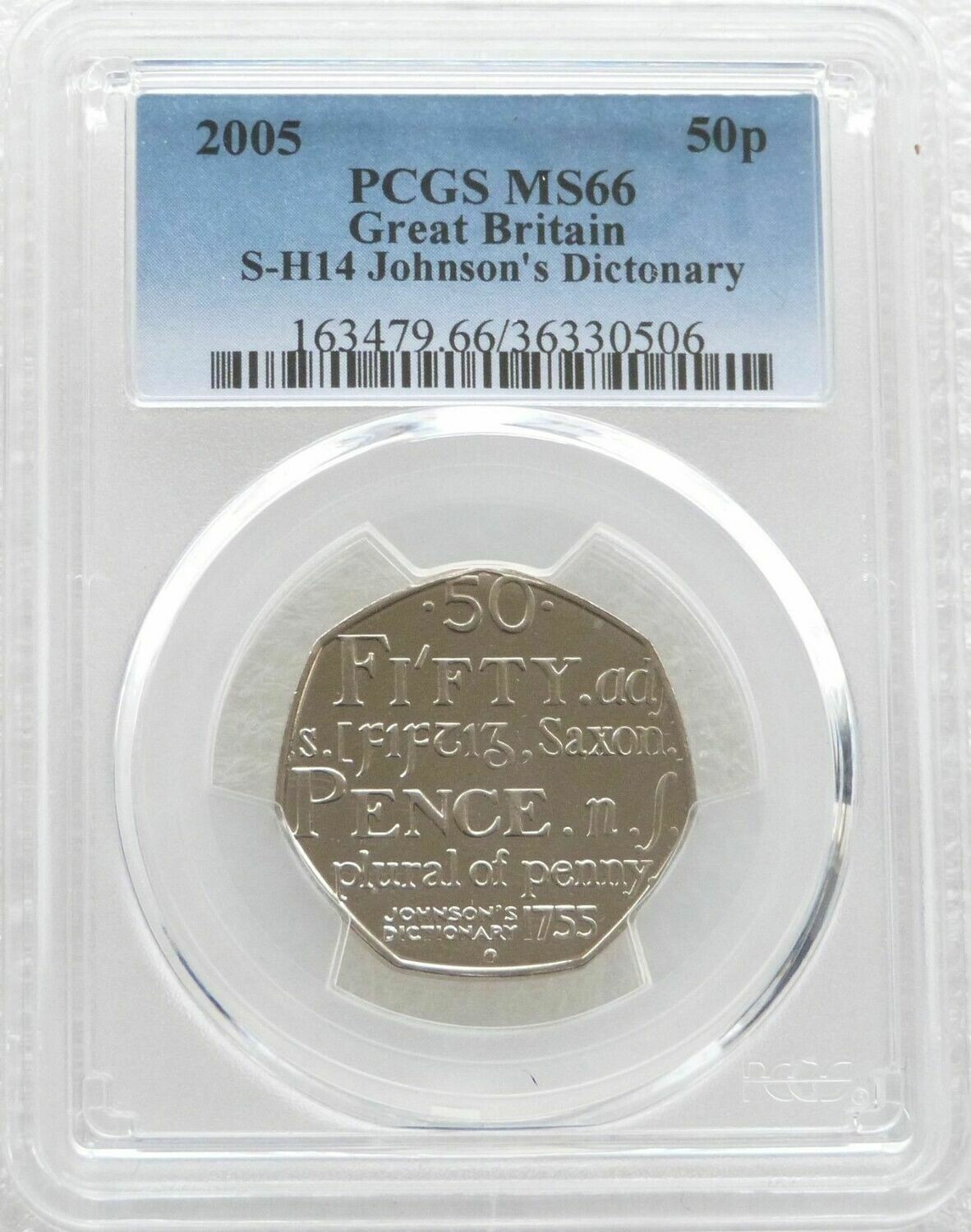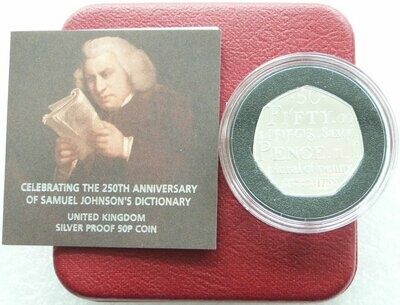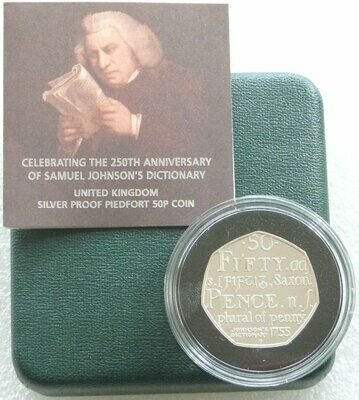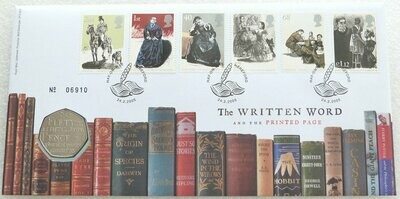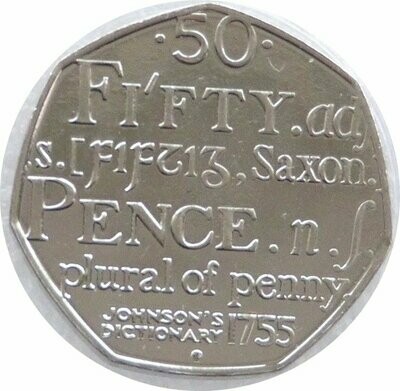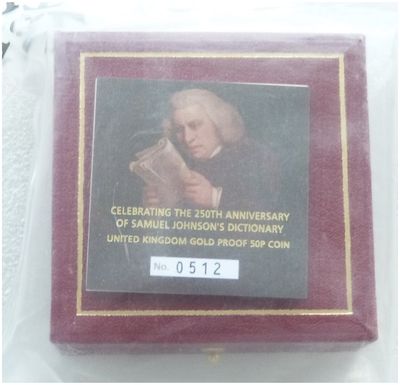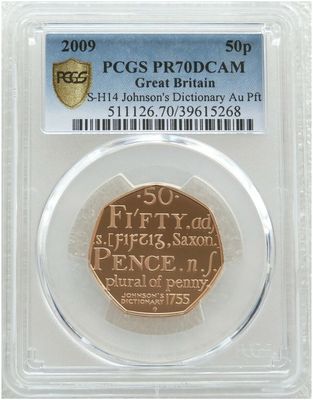2005 Dictionary 50p Brilliant Uncirculated Coin PCGS MS66
In 2005, to celebrate the 250th Anniversary of Samuel Johnson's first dictionary, the Royal Mint released a Limited Issue Brilliant Uncirculated Dictionary 50p Fifty Pence Coin Certified Slabbed and Graded by PCGS as MS66.
Samuel Johnson was one of the most important writers of the eighteenth century. He was born in Lichfield, near Birmingham, on 18 September 1709. As a child he suffered from poor health, and illness and depression were to plague him throughout his life. He once said that there was scarcely a day in which he felt completely well.
His father owned a bookshop and from an early age, Johnson loved books. He was an excellent scholar and earned himself a place at Oxford University. Unfortunately, financial problems forced him to leave the university before he finished his degree and he turned to teaching.
In 1738 he moved to London where he devoted himself to writing. He began his Dictionary of the English Language in 1746, working on it almost single-handedly until it was published nine years later in 1755.
He wrote the definitions of over 40,000 words, illustrating them with about 114,000 quotations. Unlike most modern lexicographers, Johnson sometimes introduced humour of prejudice into his definitions.
Among the best known are' excise, a hateful tax levied upon commodities', 'Lexicographer, a writer of dictionaries, a harmless drudge' and 'oats, a grain which in England is generally given to horses, but in Scotland supports the people'.
Johnson's dictionary stands as a celebration of the English Language. It remained without rival for over a century until the creation of the Oxford English Dictionary which was published towards the end of the nineteenth century. As a recognition of his contribution to the culture of English Life, when he died in 1784 he was buried in Westminster Abbey.
The reverse designed by Tom Phillips is an interpretation of the words "Fifty" and "Pence" as they appeared in Johnson's dictionary together with denomination "50" and "Johnson's Dictionary 1755".
The obverse features the portrait of the Queen by Ian Rank Broadley FRBS, FSNAD.
- Limited Mintage Worldwide
- Struck to Royal Mint's Brilliant Uncirculated Quality - A Finer Finish Than Circulating Coins
- Celebrating the 250th Anniversary of Samuel Johnson First Dictionary
- Certified Slabbed and Graded by PCGS as MS66
